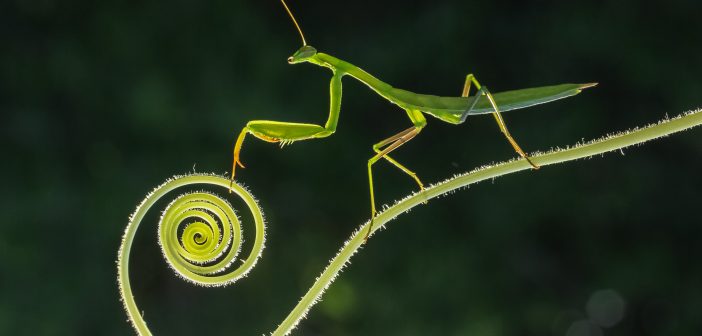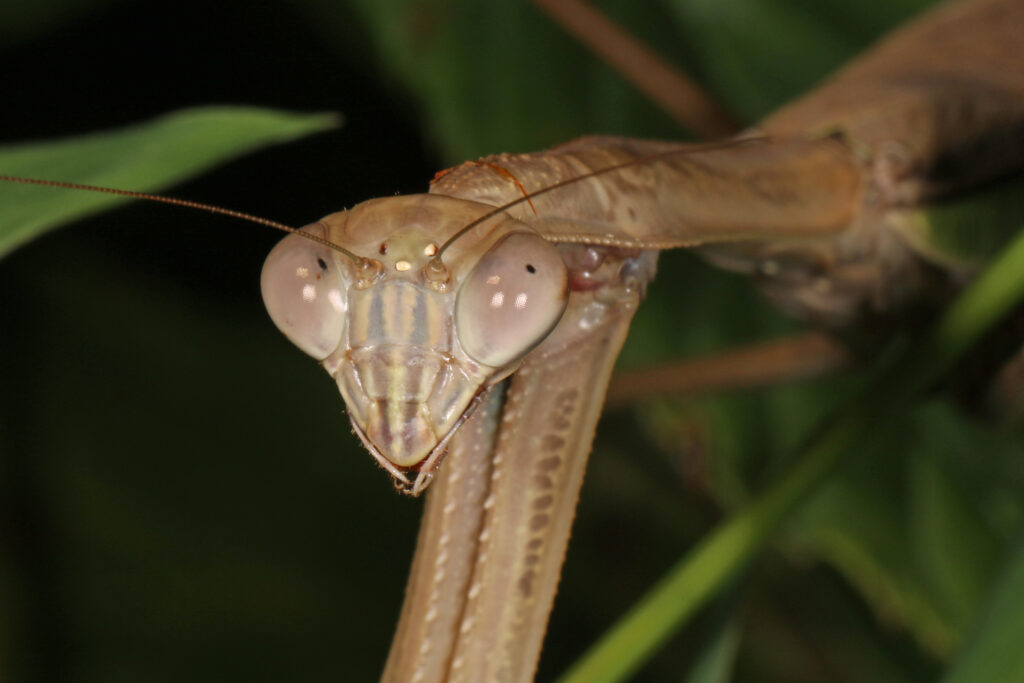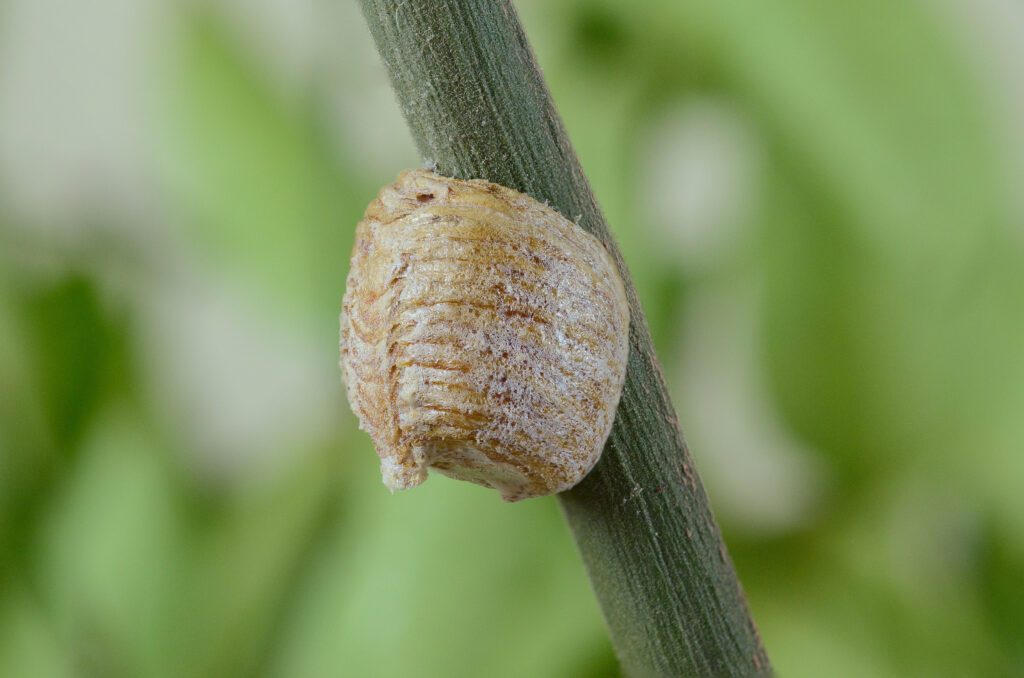If there’s an insect sure to cause a double-take, it’s a praying mantis. Stare at one; it’ll swivel its head and stare back. A lot of people call any mantis a “praying” mantis because of its short forelegs and the way the insect holds them in a prayer-like pose. But if there are any prayers, they would be from the prey about to be devoured.
Mantises will eat anything that crosses their path, including critters their own size and sometimes larger. Their forelegs are specially adapted for holding on, and their mouthparts are for chewing them up. More’s the pity for their prey, including insects, frogs, lizards, rodents, other small animals who fall within their reach, and their own kin. They’ve even been known to catch hummingbirds.
Mantises are beneficial
Mantises are considered very beneficial because they prey on harmful insects, but being indiscriminate, they kill large numbers of good insects, too. Probably, it’s more accurate to consider them mostly beneficial and sometimes not. Nurseries and gardeners often purchase mantis egg cases, which hold up to 200 eggs. When they hatch, they’re an army of voracious carnivores.
Posture explains their name
“Mantis” is from the Greek mantes for soothsayer or prophet, an obvious reference to the insects’ typical body posture. Although any mantis is commonly called a praying mantis, each species actually has a specific name, such as the European Mantis, Mantis religiosa, Carolina Mantis, Stagmomantis Carolina, and Thistle Mantis, Blepharopsis mendica. In all, there are over 2,400 mantis species, all in the order Mantodea. They’re found in various regions around the world, including Europe, but primarily in areas with a tropical environment. Twenty species occur in the United States, mainly in the northeastern U.S. and southeastern Canada.
Related to cockroaches, termites!
The oldest fossilized mantises date back to the late Jurassic Period, about 200 million years ago. It’s hard to picture a long, green mantis, a flat, brown cockroach, and a white, maggoty-looking termite being related, but they are, with all classified into the superorder Dictyoptera.
Effective predators
Their movements are so slow and deliberate that you may consider them slow-moving critters. But these babies can strike hapless prey in 1/20 of a second—too fast for human eyes to perceive it. Calm and with no particular fear of humans, mantises will pose for our close inspection or our camera lens. They’re harmless to humans; if you put a finger closely in front of one, it might accommodatingly step onto it.
Physical description
The tiniest mantis species are as small as 0.3 inches (8 mm) long, but some measure over 6.0 inches (15 cm). You’ll immediately recognize your first one, whatever the size, by its body shape and stance—and the way it can turn its head. That may not seem novel until you see it. No other insect can do that without also turning its body.
The mantis’ head is also distinctive, as it’s triangular, with large compound eyes and short, slender antennae. It sits atop a long, skinny “neck.” Their body is unique in still another way: the only animal to have only one ear. The forewings are leathery and used to protect delicate hind wings, which are the ones they actually use for flight. (Immature mantids and some species have tiny wings and are flightless.) Mantis forelegs are strong and equipped with spines that help them hang on to their prey. They typically move slowly and stealthily, but some species will give chase. For more, see The ins and outs of an insect’s anatomy
Where to look for them
Seeing one usually depends on a chance encounter. Once found, they make it easy for us to observe them closely. Most are found in grasses or on leaves of flowers, herbs, shrubs, and trees. However, not glued to plants, some may be poised for action on your patio furniture or your porch railing. Some species hang out on the ground. They’re hard to see because they sport camouflage colors of green, brown, grizzled browns, or gray. (Some species in other regions of the world are stunningly beautiful) and remain motionless for minutes at a time. Often, it’s only when they move that we spot them.
Life cycle
Mantises undergo simple metamorphosis: From egg to nymph to adult. They mate in late summer or early fall. You may have heard that part of the mating ritual for females is biting off the head of the male during or after copulation. This certainly makes for a risky encounter for the male, but this seems to occur more in captivity, seldom in the wild.
In the fall, the female lays a cluster of eggs enclosed in a large egg sac called an ootheca (oh-oh-THEE-kuh). Attaching them to twigs, she may lay up to twenty-two of these cases, and the following spring, from thirty to 200 nymphs will hatch from each. Nymphs look like tiny, wingless adults and spend the summer eating and growing. They will undergo six or seven molts, with the last one revealing fully developed wings. Adults live only through fall, just long enough to mate and provide the next generation. The female dies about two weeks after laying her egg sacs.
About spiders
All about cockroaches
All about termites
In your yard: lizards








